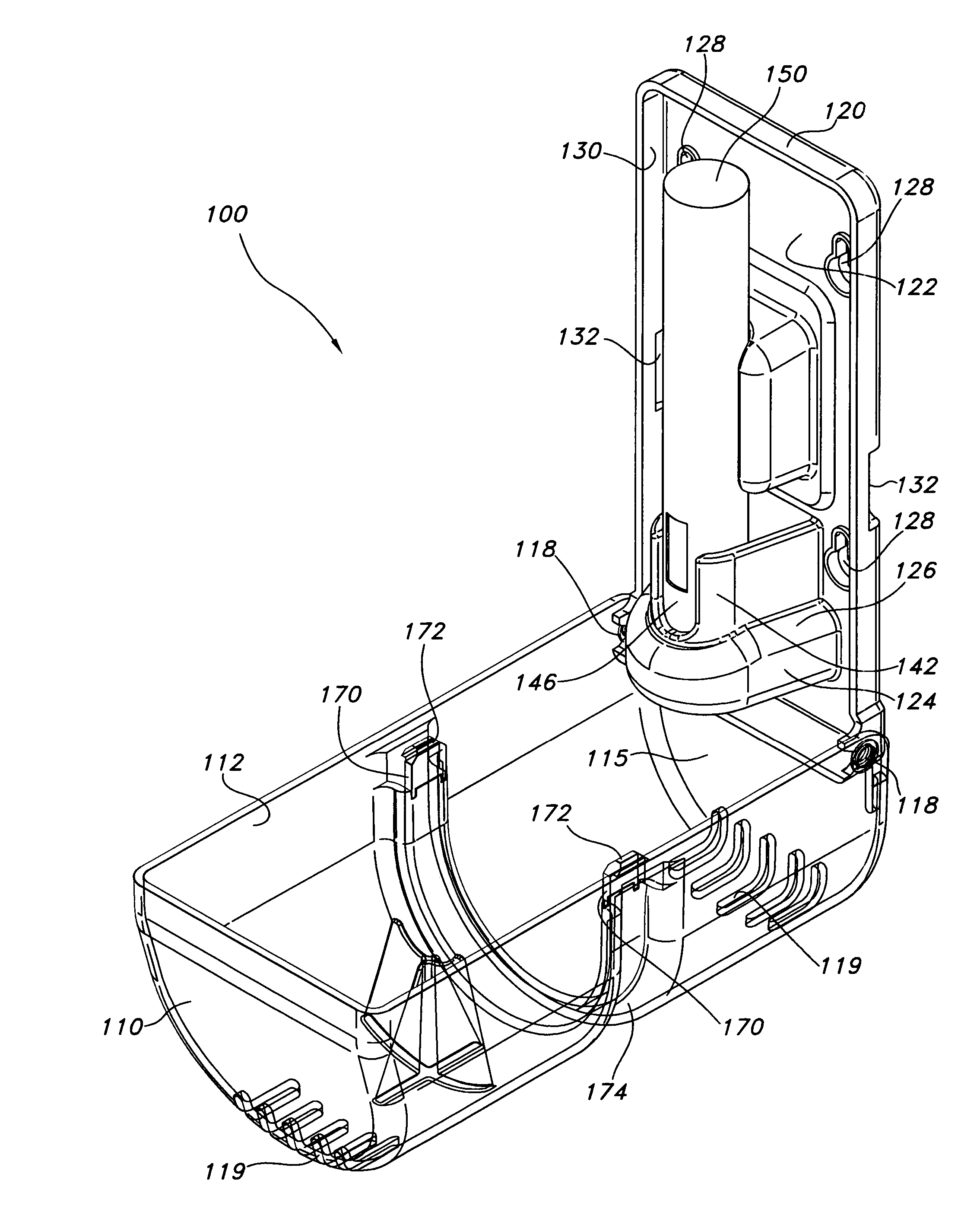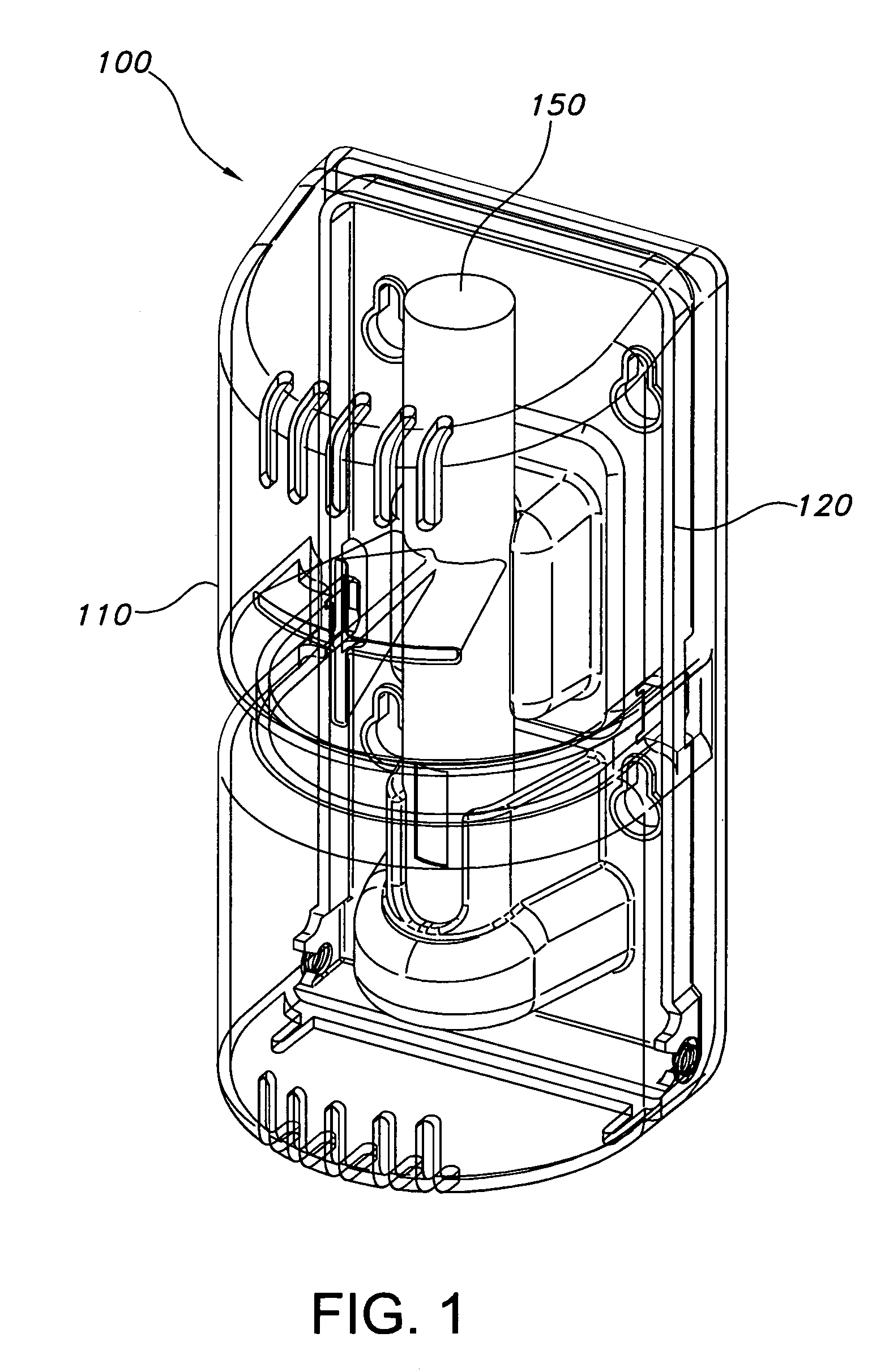Auto-injector storage and dispensing system
a technology for auto-injectors and storage systems, which is applied in the direction of applications, supporting devices, transportation and packaging, etc., can solve the problems of inability to predict the time of contact, inability to protect from mechanical forces, and inability to detect the presence of such substances, etc., to achieve the effect of high visibility and easy access for adults
- Summary
- Abstract
- Description
- Claims
- Application Information
AI Technical Summary
Benefits of technology
Problems solved by technology
Method used
Image
Examples
Embodiment Construction
[0026]The present invention overcomes many of the prior art problems associated with storing auto-injection devices in preparedness for use. The advantages, and other features of the system disclosed herein, will become more readily apparent to those having ordinary skill in the art from the following detailed description of certain preferred embodiments taken in conjunction with the drawings which set forth representative embodiments of the present invention and wherein like reference numerals identify similar structural elements.
[0027]Referring to FIGS. 1 and 2, there is illustrated a preferred embodiment of an auto-injector storage and dispensing unit (a “storage unit”) that is the subject of the present disclosure, the storage unit generally indicated by reference numeral 100. The storage unit 100 has a cover 110 attached to a base 120 in a manner that allows the cover 110 to move with respect to the base 120 (the nature of the attachment and movement is discussed in more detail...
PUM
| Property | Measurement | Unit |
|---|---|---|
| transparent | aaaaa | aaaaa |
| gravitational forces | aaaaa | aaaaa |
| perimeter | aaaaa | aaaaa |
Abstract
Description
Claims
Application Information
 Login to View More
Login to View More - R&D
- Intellectual Property
- Life Sciences
- Materials
- Tech Scout
- Unparalleled Data Quality
- Higher Quality Content
- 60% Fewer Hallucinations
Browse by: Latest US Patents, China's latest patents, Technical Efficacy Thesaurus, Application Domain, Technology Topic, Popular Technical Reports.
© 2025 PatSnap. All rights reserved.Legal|Privacy policy|Modern Slavery Act Transparency Statement|Sitemap|About US| Contact US: help@patsnap.com



